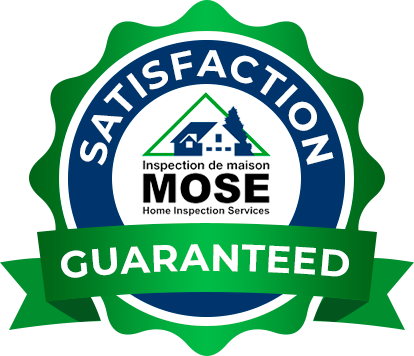Top 5 Threats to your Brick
The three pigs proved that brick was the best building material – it certainly is.
But brick has its natural enemies (and the big bad wolf is definitely not one of them.) Water and paint are at the top the list of materials that can do damage to brick.
Don’t be fooled: looks can be deceiving. “There are some houses on the plateau for example, that have an impeccable brick façade, but you go around back it’s a disaster,” says home inspector Carol Mose.
A classic example of an Outremont building which looks impeccable out front, but in the back, lower quality brick was used, it is old and deteriorated. This wall needs a lot of work.
Carol’s extensive experience with clay and kilns gives her a scrutinizing eye for brick problems. She can tell how high the brick was fired when it was made, thus the quality of it, by color. Typically in Montreal, she says the high quality brick is used on the front, and the low quality on the back. “People try to cover up bad looking bricks by painting them, not realizing that they’re causing more damage. Over the long run, say ten years, all the joints become sandy and fall out and you’ll end up having to remove the paint and repoint the whole wall.”
“Think twice before you pull out that can of paint!”
Painted brick vulnerable below exhaust vents and around windows because of humidity and water runoff. Spalling brick results.
Maintaining the brick and mortar on your home helps minimize degeneration. If you’re thinking of buying an older home with 3 exposed brick walls, it’s important to understand the state of the brick because fixing it can be extremely expensive.
Learn to see the signs of brick damage.
Top 5 threats to your brick:
1. Water damage:
Brick has poor drainage ability, so holes for drainage and ventilation called weep holes should be present at the bottom of the wall to prevent water damage. Signs of water damage include: flaking bricks (also referred to as spalling bricks), or protruding bulges in certain areas because the wire ties securing the brick to the wood structure have rusted and become weak over time due to water infiltration. Poor drainage or ventilation of brick veneer can also cause water damage to the wood structure behind it.
2. Crumbling Mortar:
If the mortar between your bricks is dusty or cracking, if you can stick a screwdriver into the mortar and it holds; its time for pointing. Tuck pointing is a labour intensive process that involves removing and replacing crumbling and missing mortar between the bricks, which protects against further deterioration. Sandy mortar is especially common on painted brick. The implication is that the mortar gets sandy around the joint and falls out. It’s worse around vents where there’s humidity, and in areas vulnerable to snow accumulation (porches and balconies). Most inspectors will tell you, painted brick is not recommended.
3. Long Cracks:
Long cracks, also called ‘step cracks’ which often appear as a staircase pattern, are the result of your home’s foundation settling unevenly. They are also caused by rusting lintels: the piece of steel found over window or door openings that supports the brick above. The rust expands causing the mortar to crack. Fill the cracks immediately to prevent water or insects from entering through them. If cracking recurs, there’s a possibility there’s a problem with your home’s foundation. It may be wise to check with a structural engineer.
4. Sagging Bricks:
Sagging bricks over a door or window could be the sign of a missing lintel. A lintel supports the weight of the bricks above it, very important over openings in the home. In the case of brick lintels, the mortar needs to be monitored carefully and maintained if showing signs of failure, for example, if you see bricks slipping out of place.
5. White Staining:
If you see white staining on the surface of your bricks, it is actually efflorescence, a salt stain left behind when water dries. This white powder can be removed easily with a dry stiff-bristled brush and strong soapy water. If the white staining returns, this could be a sign of water infiltration or condensation that has migrated out from behind the brick wall.
Efflorescence on a brick wall.
Sometimes, we see white staining under windows because of a missing or inadequate drip edge on the windowsill. A drip edge is a small groove on the underside of the sill that directs the water away from the wall.
If you need help determining the state of your brick, call Mose Home Inspection Services to identify issues with your brick, and get further info on whether you can maintain it, or if you need to call a mason.

